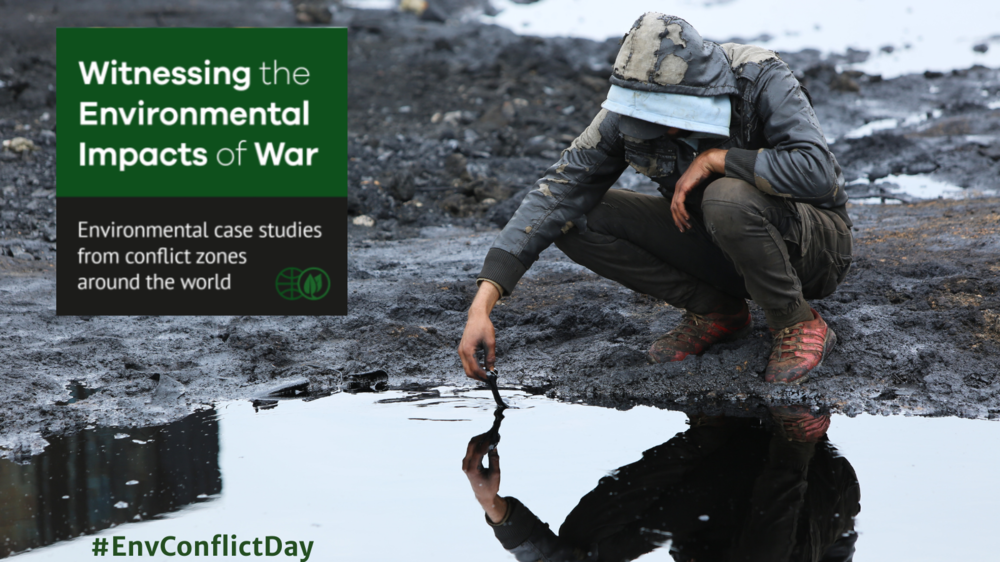As wildfires rage through countries in conflict and oil spills and toxic waste threaten to cause environmental catastrophes in warzones, the environmental dimensions of armed conflicts are now more urgent than ever.
The environmental legacy from wars and conflicts is getting more and more attention in part because people have been studying it more. Bold action and leadership are needed to prevent and mitigate environmental harm as a result of military operations.
That is why PAX has joined forces with a number of other NGOs to launch ‘Witnessing the Environmental Impacts of War’, a special publication made for the 2020 International Day for Preventing the Exploitation of the Environment in War and Armed Conflict. With case studies from Iraq, Syria, Colombia, Yemen, Ukraine, Laos DPR and Senegal, the publication provides a snapshot of environments impacted by active conflict, post conflict governance gaps, and humanitarian efforts to restore usable lands. The stories tell a tale of the often complex relationship between armed conflict and its environment footprint that lingers long after the guns fell silent.
New developments
Through innovative research and working with affected communities, the stories and cases presented encourage discussion and policy developments in international forums on the ways environment, peace and security are interlinked. Through new technologies and information sharing we have the ability to quickly identify and respond to environmental risks and ensure their impacts can be prevented, mitigated and minimized.
This means recognizing the critical role the environment plays in the conflict cycle and how protecting the environment strengthens the protection of civilians depending on it. This can be done through military training, upholding and implementing the international legal framework on protection of the environment in armed conflicts, mainstreaming the environment in humanitarian response and security-related discussions and developing nature-based solution for conflict-caused environmental damage.
That is why PAX and partners are calling for stronger Environment, Peace and Security Agenda. This entails the following:
- Recognizing the critical role the environment plays in the conflict cycle.
- Acknowledging the inextricable link between the protection of the environment and the protection of civilians.
- Committing to full implementation of the legal framework protecting the environment in armed conflict.
- Mainstreaming environmental protection in peace and security discourse.
- Supporting environmental data architecture.
- Including local stakeholders in all processes to assess and address post conflict environmental risk reduction and remediation efforts.
We welcome further engagement from civil society groups in conflict-affected areas, academics, and the wider environmental, humanitarian and disarmament community in documenting and sharing stories to support accountability for States and armed groups conduct of military activities.
The UN Secretary General does not mince words in his statement on environment and war: “We need to act boldly and urgently to reduce the risks that environmental degradation and climate change present for conflict and commit to protecting our planet from the debilitating effects of war.”
Collaboration
The publication is a collaborative effort by Amnesty International, the Conflict and Environment Observatory, Environmental Law Institute, Geneva Water Hub, Global Green Institute, Norwegian People’s Aid, PAX, Universidad Externado de Colombia and the Zoï Environment Network to provide expert evidence of the urgency to mainstream environmental issues in security processes.




